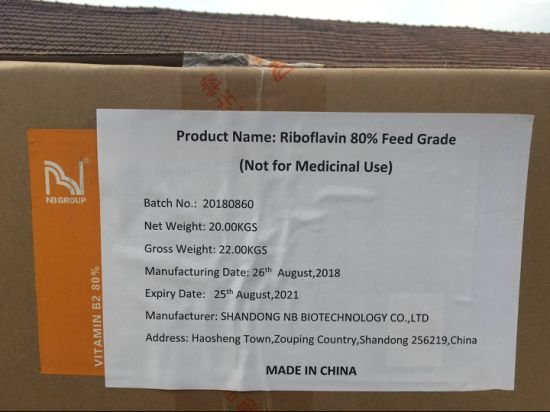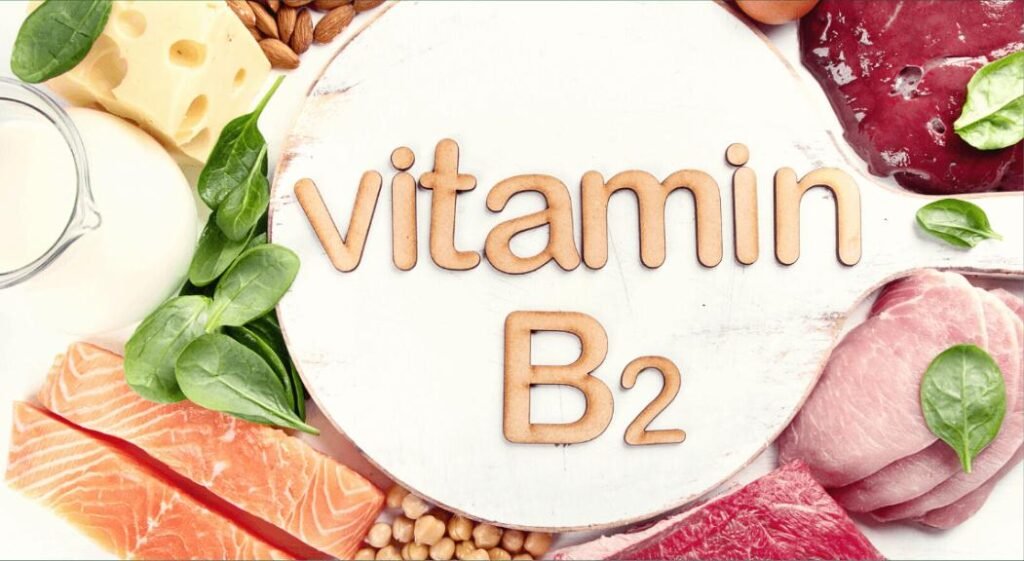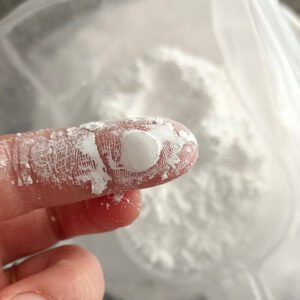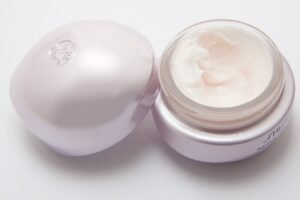1. Riboflavin
Vitamin B2, also called riboflavin, CAS 83-88-5, formula C17H20N4O6, molecular weight 376.37, yellow or orange-yellow crystalline powder.
Riboflavin is one of the 13 essential vitamins and one of the B vitamins. It is slightly soluble in water and is stable when heated in neutral or acidic solutions. It is a component of FAD and FMN, which are important coenzymes of many enzyme systems in the body. When deficient, it affects the biological oxidation of the body and causes metabolic disorders. Its lesions are mostly manifested as inflammation of the mouth, eyes, and external genital area.
Riboflavin is mainly used as animal feed and food additive, accounting for more than 60% and 30% respectively, while other requirements such as pharmaceuticals are smaller (less than 10%). Among them, feed grade VB2 is riboflavin 80% powder, and riboflavin 98% is for food, which is mainly added to flour and other foods.
2. Physiological functions of riboflavin
1. involved in biological oxidation and energy metabolism in the body, related to the metabolism of carbohydrates, proteins, nucleic acids, and fats, can improve the utilization of protein in the muscle, promote growth and development, and maintain the integrity of the skin and cell membranes. It has the function of protecting the mucous membrane of skin follicles and sebaceous glands.
2. involved in cell growth and metabolism, are the essential nutrients for muscle tissue metabolism and repair, such as strengthening liver function and regulating the secretion of adrenaline.
3. Participate in the metabolism of vitamin B6 and niacin, which is a model of the coordinating role of B vitamins. fad and fmn are involved in the process of converting tryptophan into niacin and vitamin B6 into pyridoxal phosphate as cofactors.
4. It is related to the absorption, storage, and mobilization of iron in the organism.
5. It also has antioxidant activity, which may be related to flavinase-glutathione reductase.
3. Vitamin B2 Riboflavin Manufacturers
The main vitamin b2 riboflavin manufacturers are Hubei Guangji Pharmaceutical Co., Ltd, BASF, DSM, Shanghai Hegno Pharmaceutical Holding Co., Ltd, and NB Group Co., Ltd.
3.1 Hubei Guangji Pharmaceutical Co., Ltd
Hubei Guangji Pharmaceutical Co., Ltd was founded in 1969 and listed on the Shenzhen Stock Exchange in 1999 (stock code 000952). It is a 50-year-old state-owned high-tech enterprise, mainly producing vitamin B2, B6, and pharmaceutical preparation products, and is the main supplier of vitamin B2 products (at present, the largest production volume and market share). It has nine molecular companies. The company has comparative advantages in vitamin B2 strain preferential cultivation and production process.
3.2 BASF and DSM
BASF and DSM are integrated vitamin giants.
3.3 Shanghai Hegno Pharmaceutical Holding Co., Ltd
Shanghai Hegno Pharmaceutical Holding Co., Ltd is a high-tech company fully dedicated to the research, development, production, and marketing of high-quality pharmaceutical and nutritional ingredients. Headquartered in Shanghai, China, Hegno’s main production bases are located in Inner Mongolia and the Yangtze River Delta, with more than 60 years of experience in API manufacturing. Its vitamin products include biotin, riboflavin, and vitamin b6.
3.4 NB Group Co., Ltd
NB Group Co., Ltd was founded in 1995 and is a high-tech enterprise integrating vitamin, amino acid, and food additive production, biotechnology research and development, and international import and export trade. The company’s leading products include feed grade choline chloride, vitamin B2, threonine, valine, tryptophan, lysine, and other series products. The company’s production technology level of choline chloride is always in the leading position in the industry. Riboflavin and threonine products are manufactured by introducing international advanced technology and process equipment to ensure that the quality of the products meets the international first-class standards for export to the European Union.

4. Vitamin B2 riboflavin manufacturing process
There are two main industrial production methods for VB2: one is the biological fermentation method, which is further divided into the traditional yeast fermentation method and the new genetically engineered bacteria fermentation method; the other is the chemical semi-synthesis method, in which D-glucose is used as raw material to generate D-ribose by fermentation, and then D-ribose is used as raw material for chemical synthesis. Maize is the main raw material for fermentation to produce VB2, accounting for about more than 50% of the production cost.
The yeast fermentation method has the advantages of an economical and effective production process, easy automation control, non-toxic product, and high purity, and is currently widely used in the industrial production of VB2. The main strains of Riboflavin production are Bacillus cereus, Bacillus subtilis and Pseudocystis asiatica. The specific steps are as follows:
Bacterial strains–>Spore suspension–>Spore suspension–>Fermentation tank–>Vitamin B2
5. Summary
The main manufacturers of vitamin b2 riboflavin include Hubei Guangji Pharmaceutical Co., Ltd, BASF, DSM, Shanghai Hegno Pharmaceutical Holding Co., Ltd, and NB Group Co., Ltd. Among them, Hubei Guangji Pharmaceutical Co., Ltd has the largest market share and the advantage of scale.
Currently, vitamin b2 is mainly produced by fermentation method, and corn is the main raw material, accounting for more than 50% of the production cost.






